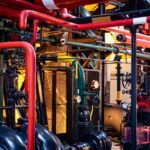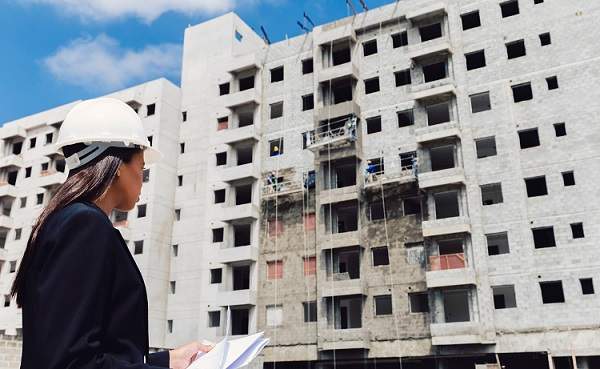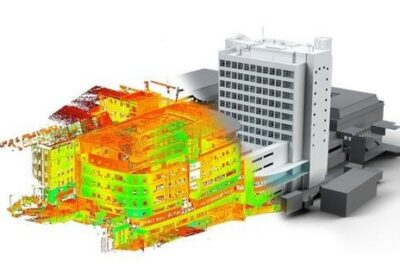
7 Types of Metal Used in Construction and Infrastructure
Metals are extremely strong, long-lasting, and versatile, making them essential in the construction and infrastructure industries. Metal provides the structural stability needed to withstand the test of time, whether used to build sturdy bridges or tall skyscrapers. This article examines seven crucial metal kinds that are frequently utilized in infrastructure and building projects. Because each metal has unique qualities that suit particular applications, constructed environment is stable and safe.
- Steel
Steel, made up of iron and carbon, is utilized most frequently in the building industry. Because of its exceptional durability, adaptability, and cost-efficiency, it is frequently selected for various construction endeavors. Steel has a high load-bearing capacity and does not bend easily under stress, making it an ideal material for various applications, including reinforcing concrete structures and producing beams and columns. In order to meet the extensive demands placed on them by the construction sector, metal suppliers stock an extensive inventory of steel products. These products include structural steel sections and steel plates.
- Aluminum
Aluminum is a metal that is both lightweight and offers high corrosion resistance; as a result, it is suited for applications both inside and outside the home. Its low density makes it easier to transport and install without compromising the structure in any way, and it does so while keeping its integrity. Windows, doors, roofs, and cladding systems are typical applications for aluminum’s wide range of uses. Because of its malleability, it is possible to create and customize complicated designs, both of which contribute to the overall visual appeal of buildings. Aluminum profiles and sheets can be ordered from suppliers in various dimensions, providing designers such as architects and engineers with additional design options.
- Copper
Copper is a metal commonly used in plumbing networks and electrical systems due to its high conductivity and long-lasting nature. Its superior electrical and thermal qualities make it an excellent choice for electrical wiring, cables, and power transmission. In addition, due to its antibacterial qualities, copper is a sanitary material for plumbing applications such as fittings and pipelines. Copper’s adaptability and durability make it an ideal material for constructing critical infrastructure since it ensures safety and efficiency.
- Stainless Steel
The alloy of steel and chromium, known as stainless steel, has exceptional properties in terms of its corrosion resistance and strength. Because it does not rust or discolor easily, it is an excellent choice for situations that are subjected to a lot of chemicals and have a lot of moisture. Because of its hygienic and easy-to-clean nature, stainless steel is commonly utilized in various settings, including restaurants, hospitals, and laboratories. In addition, because of its aesthetic appeal and structural integrity, it is frequently selected for use in construction projects as a component of architectural features and ornamental elements.
- Titanium
Titanium is a metal that is noted for its low weight compared to its remarkable strength-to-weight ratio and its corrosion resistance. Its uses in construction are generally centered on structural components that demand high strength, such as aircraft hangars and bridges, and these are the areas in which it is most commonly utilized. Because of its longevity and resistance to high temperatures, titanium is an excellent material for use in industrial facilities frequently subjected to unfavorable environmental conditions. Titanium is a metal that is utilized in certain construction projects due to its unique qualities. Despite its relatively high cost, it is an extremely useful material.
- Zinc
The construction industry makes extensive use of zinc because it is an adaptable and economical metal. Galvanization is the most common application method and serves largely as a protective coating for steel buildings. This coating protects against corrosion and extends the lifespan of various infrastructure components, including buildings, bridges, and other features. Due to zinc’s resistance to oxidation and UV radiation, it is frequently used in constructing roofing systems, gutters, and downspouts. You can get Galvanized steel items from a metal supplier. These products ensure the durability and lifespan of construction projects.
- Brass
Brass, a copper and zinc alloy, combines the qualities of both metals to create a versatile material utilized in infrastructure and building projects. Because of its great formability and resistance to corrosion, it is appropriate for use in decorative applications like architectural detailing, door handles, and light fixtures. Because of its resistance to microbiological growth and its high level of durability, brass is frequently used in plumbing systems. Brass, with its warm, golden color, provides a touch of aesthetic appeal to contemporary and traditional designs.
Conclusion
Reliable suppliers are essential in supplying the construction sector with various metals to satisfy the various requirements of infrastructure projects. Buildings and structures benefit from the stability, toughness, and aesthetic appeal of materials like steel, aluminum, copper, stainless steel, titanium, zinc, and brass. Environment’s safety and functionality are ensured by each metal’s unique qualities that make it suited for particular uses. Architects and engineers can make well-informed decisions when choosing materials for construction and infrastructure projects by being aware of the properties of these metals.















